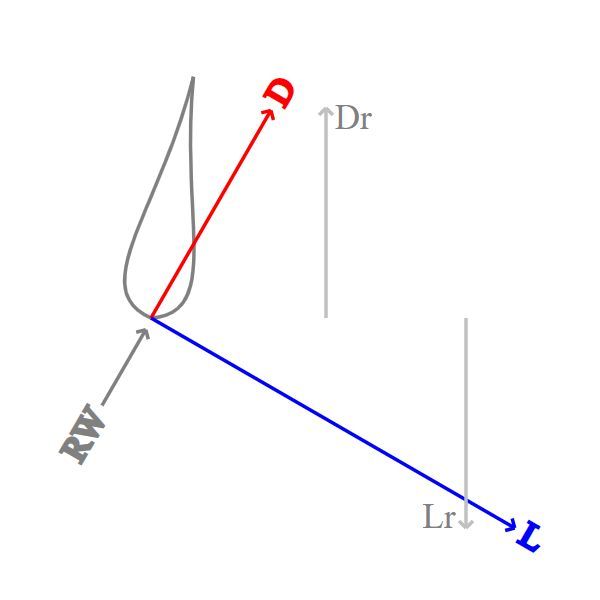Cobalt wrote:
I have to admit that I also don’t understand how more blades should give more drag.
More tip vortex, shorter lower aspect ratio, versus lower speed. But not always so i guess it all comes down to propeller efficiency.
5 large blades with considerable area, designed to absorb 1200SHP compared to 2 narrow blades designed to absorb 140hp. The former is going to give up more HP in efficiency losses, when it is outside its normal motive envelope.
RobertL18C wrote:
Presumably auto feather and rudder boost are MEL items on most twin turbo props?
It varies on the King Air 200, depending on the serial number. When you get to the higher powered engines typically found on the later airframes the autofeather is definitely a no-go item if u/s
I remember from the sim training that forgetting to arm autofeather is definitely a mistake that could kill you, although it is possible to manage without it if you’re sharp.
“The prop was belt driven from the engine and the belt snapped.”
My memory is that the belt-driven alternator seized. The belt did not snap, and the engine could not overcome the friction, so it stopped.
The subsequent events were as mentioned, but, after touchdown, the pilot retracted the undercarriage to decrease stopping distance. This had the opposite effect, as the prop blades shattered, losing its airbrake effect. The Europa monowheel does not completely retract, so the additional friction was minimal.
Just found the AAIB report. It’s…
Whlst crusng at 3,500 ft near the Severn Estuary, the arcraft suffered an alternator bearng sezure and smoke from the drve belts entered the cockpt. The engne stopped, but, due to ts free-wheel mechansm, the propeller contnued to rotate ncreasng the drag and causing a significantly higher rate of descent during the subsequent forced landng than for a propeller at dle or stopped.
Not sure why copy/paste dropped all the letter I!!
Anyway, it is clear that the prop free wheeled faster than usual which caused additional drag.
carlmeek wrote:
The engine stopped, but, due to ts free-wheel mechanism, the propeller continued to rotate increasing the drag and causing a significantly higher rate of descent during the subsequent forced landing than for a propeller at idle or stopped.
Its not clear to me how a propeller freewheeling while disconnected from any braking load causes additional drag relative to a stationary propeller. Conservation of energy says that additional drag results from increased energy absorbed by engine’s braking load: if the propeller turns faster while connected to the same braking torque the power absorbed by the engine increases, so the aircraft descends faster. If the propeller is connected to nothing, there is no brake to absorb energy so propeller rpm is irrelevant to braking power.
If the “freewheel mechanism” does have enough friction effect to act as a brake, it must’ve got very hot to absorb the energy from the increased rate of descent!
Silvaire wrote:
Its not clear to me how a propeller freewheeling while disconnected from any braking load causes additional drag relative to a stationary propeller.
A stationary propeller creates drag by forcing the air particles to be displaced from were they would otherwise be. i.e. changes in pressure and velocity, like the rest of airframe. A rotating propeller does the same thing, and depending on angle of attack and speed it has the potential to do more so than a stationary propeller.
The amount of drag should be equal to the force created by the pressure changes around the propeller. Conservation of energy says that additional drag results from increased energy absorbed by engine’s braking load AND the additional pressure changes made to the air. At very high blade speeds you also have additional effect of compressibility.
That was a beautiful explanation of prop braking quoted by JasonC, but sometimes a picture helps:

The aircraft is moving from right to left, and the propeller blade in the picture is free to rotate in a vertical plane, and is moving downwards in this case.
I have exaggerated angles and scales to show things more clearly.
From the blade’s point of view the relative wind is coming from the bottom left.
By definition the Drag is in the same direction as the wind and the Lift is at right angles to it.
The equilibrium prop speed is when the Drag component opposing rotation matches the Lift component promoting it, which I have tried to show with the gray lines marked “Dr” and “Lr”.
At this equilibrium both forces have components resisting aircraft motion, i.e. point backwards :-)
Beautifully put, thanks!
Fantastic!
This also means that a huge part of the braking effect comes from the aerodynamic forces acting on the rotating prop – this works even if there is no torque from the engine acting as a brake.
I still don’t get why, at the same RPM, the number and shape of blades makes any difference to this. It does not make a (significant) difference when moving under engine power.
DavidS wrote:
At this equilibrium both forces have components resisting aircraft motion, i.e. point backwards :-)
Indeed and if you allow the propeller to free wheel at its maximum speed instead of allowing it be braked by an engine then both the magnitude of those vectors will increase!